Wood Cutting Board Care & Maintenance

A wood cutting board is one of the most actively used kitchenware items in your home. In order to keep it looking great and remain a long lasting accessory in your kitchen, it's important that you give your cutting board the proper care it requires.
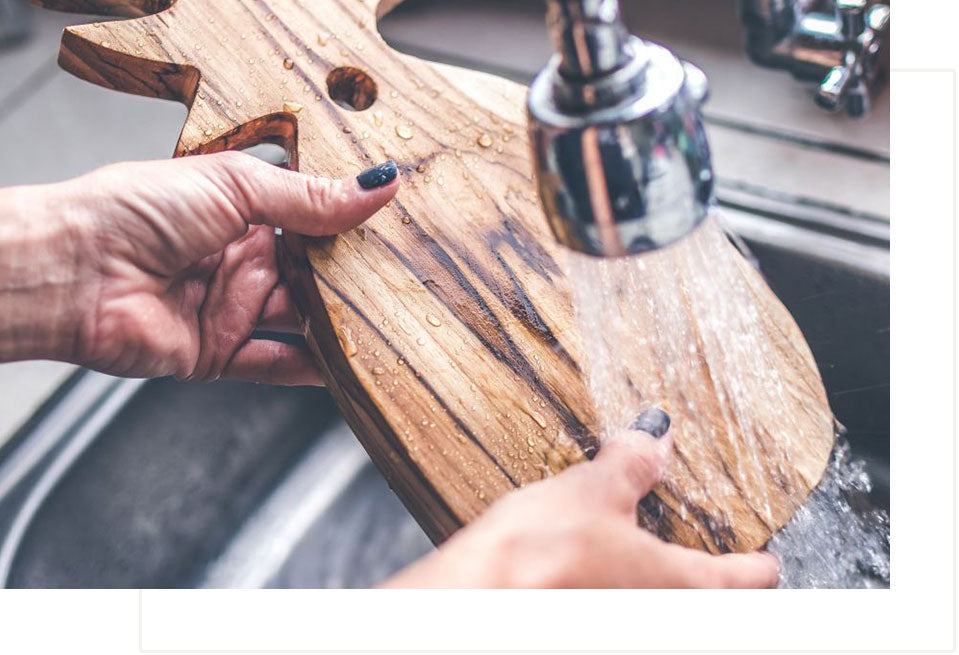
Hand wash only - never submerge in water
To avoid bacteria, it's important that you wash your cutting board immediately after use. Wipe the cutting board with hot soapy water, rinse it with hot water only and wipe it dry with a clean dish towel. Store in a dry area. Important:
 Never submerge in water.
Never submerge in water.
 Do not place in dishwasher or in a microwave.
Do not place in dishwasher or in a microwave. Disinfect & deodorize using vinegar
Disinfect & deodorize using vinegar
We recommend keeping a spray bottle of vinegar handy to disinfect & deodorize your wood cutting board. Acetic Acid (white winegar) is an excellent disinfectant for E. coli, Salmonella and other household bacteria. Spray vinegar on the wood cutting board, let it sit for a few minutes and wipe it with a damp warm cloth.
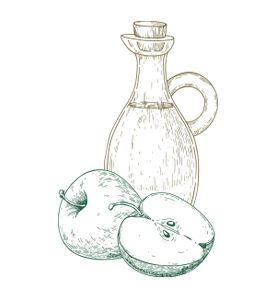

 Remove stains & deodorize with baking soda
Remove stains & deodorize with baking soda
Combine 2 tablespoons of baking soda, 1 tablespoon of salt and 3 tablespoons hot water to create a non-toxic cleaning agent. Mix these ingredients together to form a paste and scrub the entire surface of the cutting board. Finally, wipe it with a warm wet cloth and dry with a dish towel.
 Clean with coarse salt & lemon
Clean with coarse salt & lemon
For an all-natural clean, first try dampening the wood cutting board with a warm cloth and sprinkling coarse salt over it. Cut a lemon in half and scour the cut side of the lemon over the board while slightly squeezing the lemon juice out. Let it stand for five minutes and use a scrub brush to remove the excess.
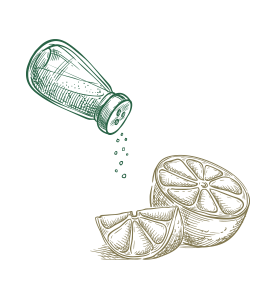
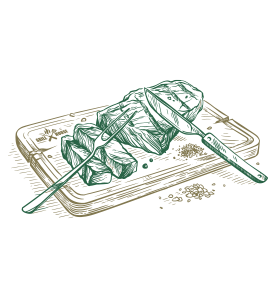
 Refurbishing wood cutting board
Refurbishing wood cutting board
It's hard to avoid knife marks from accumulating on your cutting board over the years. The wonderful thing about a wood board is that it can be returned to it's original splendor. All you need is three different grits of sand paper (100, 180 and 240). First sand the board with the coarser 100 grit, then the 180 grit and finish with the fine 240 grit. Once you are done with sanding , wash the board, let it dry and apply our conditioner.
Wood Cutting Board Oil Options

We recommend treating the board frequently in order to repel food particles and prevent stains and cracks from happening. It's best to treat the board at least once a month and twice a month if used often. It's important to make sure that the cutting board is clean and dry before applying any of these oils.
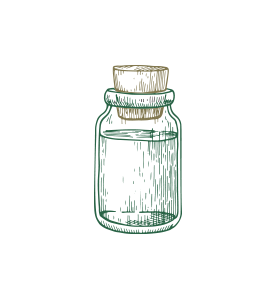
 Mineral Oil
Mineral Oil
Mineral oil is the most commonly used option because it is a safe and cost effective way to keep your wood cutting board looking great for years. Food safe mineral oil can be purchased at your local drug store or major retailer. Apply the mineral oil using a clean cloth and spread evenly over the board. Let the oil set in for a few hours, or even let it set overnight if you can. Afterwards, wipe the excess oil off using a dry cloth.
 Beeswax and Mineral Oil Combo
Beeswax and Mineral Oil Combo
You can combine mineral oil and beeswax in order to obtain the penetrating qualities of mineral oil and the sealing qualities of beeswax.
 In a small saucepan, measure 1/4 cup of beeswax and 1 cup of mineral oil. Stir constantly on low heat until
until the beeswax is completely dissolved. If temperature is too high, the beeswax will discolor.
In a small saucepan, measure 1/4 cup of beeswax and 1 cup of mineral oil. Stir constantly on low heat until
until the beeswax is completely dissolved. If temperature is too high, the beeswax will discolor.  Remove from heat and let stand for a minute, then pour in a sealed jar and let cool for a few hours. Stir once or twice every hour to ensure it is well blended. If you skip the stirring, the mixture won't be as homogenous.
Remove from heat and let stand for a minute, then pour in a sealed jar and let cool for a few hours. Stir once or twice every hour to ensure it is well blended. If you skip the stirring, the mixture won't be as homogenous.
 Using a small cloth, rub the paste on board until absorbed and let it stand for 5-15 minutes.
With a clean cotton cloth, buff in a circular motion until the finish is smooth.
Using a small cloth, rub the paste on board until absorbed and let it stand for 5-15 minutes.
With a clean cotton cloth, buff in a circular motion until the finish is smooth.
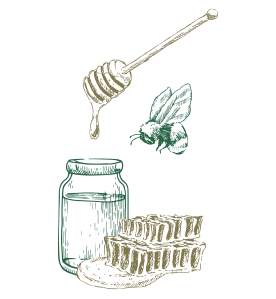
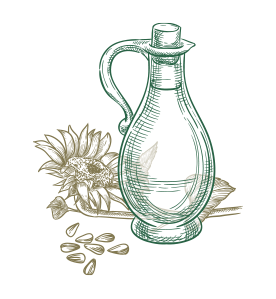
 Avoid Vegetable or Nut-based Oil
Avoid Vegetable or Nut-based Oil
Do not use vegetable or nut-based oil on your cutting board for the simple reason that it will spoil and become rancid. This will leave your wood cutting board with an unpleasant smell that will also noticeably change the taste of the food you are preparing.
Cut Lightly
When using your wooden cutting board, make sure you pair it with sharp knives that make cutting easy and apply minimal pressure to void creating deep gashes in your wooden cutting board. If your knives are dull, take them in to a professional knife sharpener - you'll be surprised what a difference sharp knives can make in kitchen prep!
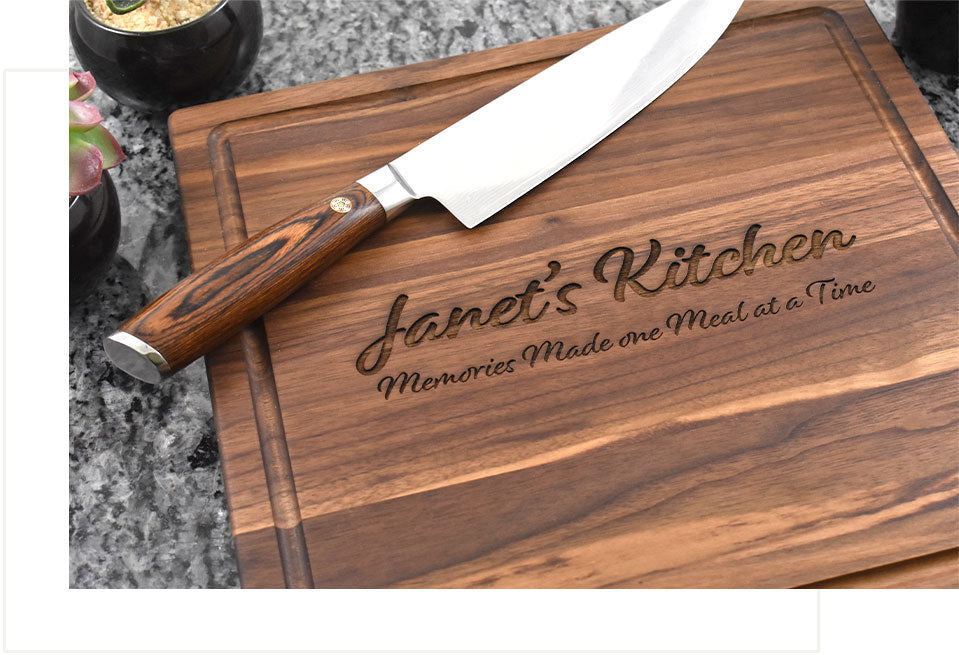
Food Safety Practices
According to U.S. Department of Health & Human Service's food safety website the main steps to ensuring that your foods are prepared in a safe manner that reduces the risks of getting food poisoning or worse are:
 Clean - Wash hands and utensils frequently. Wash fruits and veggies.
Clean - Wash hands and utensils frequently. Wash fruits and veggies.
 Separate - Keep meat, poultry, seafood and eggs separate from all other foods.
Separate - Keep meat, poultry, seafood and eggs separate from all other foods.
 Cook - Cooked food is safe once heated to a high temperature to kill bacteria.
Cook - Cooked food is safe once heated to a high temperature to kill bacteria.
 Chill - Keep your family safe from food poisoning by refrigerating foods promptly.
Chill - Keep your family safe from food poisoning by refrigerating foods promptly.
We recommend visiting the food safety website with your family and brushing up on your food safety knowledge. Nobody wants a round of food poisoning!


 Disinfect & deodorize using vinegar
Disinfect & deodorize using vinegar